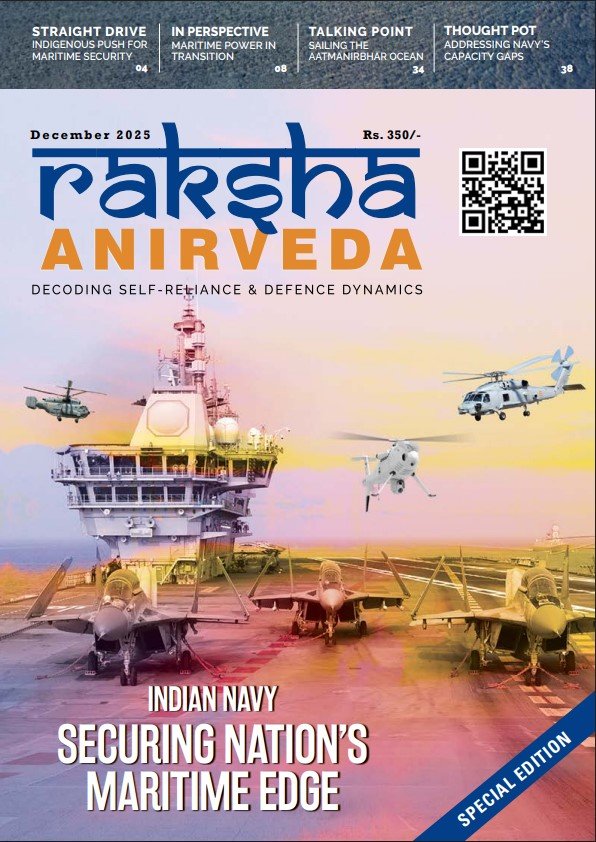Operation Sindoor underlined India’s ability to impose its will on the battlefield. Yet the weeks that followed have shown that the bigger war is not about missiles or drones. It is about autonomy. The United States, once projected as India’s strategic partner, is now flexing a set of policies that look deliberately antagonistic. From revoking the sanctions waiver on Chabahar to slapping punitive tariffs, from pricing Indian talent out of the H-1B system to courting Pakistan’s military elite, Washington has reminded New Delhi of an uncomfortable truth. Dependence on external powers is the real enemy.
The sudden withdrawal of the sanctions waiver for Chabahar is the sharpest signal. This port was India’s answer to geography. It bypassed Pakistan to give India access to Afghanistan and beyond. It counterbalanced China’s hold on Gwadar. It became a humanitarian artery when India sent wheat to Kabul during food crises. With one American decision, that artery has been strangled. Banks, insurers, and shipping companies will not risk the long arm of US penalties. Infrastructure will stand, but it risks turning into a monument to frustrated ambition.
Chabahar port is geographically significant for India. It gives India access to Central Asia. It became a humanitarian artery when India sent wheat to Kabul during food crises. With one American decision, that artery has been strangled. Banks, insurers, and shipping companies will not risk the long arm of US penalties
The second blow comes in the form of trade tariffs. Washington has penalised Indian goods across sectors, citing both energy imports from Russia and broader imbalances. These tariffs hurt exporters, bleed revenues, and introduce uncertainty into India’s economic planning. The rhetoric of partnership counts for little when the world’s biggest economy chooses to weaponise access to its market against you.
The third blow strikes at India’s human capital. The hike in H-1B visa fees has shaken one of the strongest bridges between the two economies. Indian talent has powered Silicon Valley and brought back remittances, skills, and credibility. Now this bridge is becoming unaffordable. For professionals, the dream is turning into a trap. For Indian companies, the cost is unsustainable. What was once a strength has been converted into a lever of control.
Through the Saudi Arabia-Pakistan defence pact, the US finds a way to keep Islamabad in play. Now, reports of American interest in returning to Bagram in Afghanistan add a final twist. India, which built influence in Kabul through aid and infrastructure, is being told that its space can be blurred overnight
While India is being squeezed, Pakistan is being courted. Field Marshal Asim Munir was welcomed in Washington without even the fig leaf of civilian authority. Investment incentives and trade discussions are back on the table. Through Saudi Arabia’s new defence pact with Pakistan, Washington sees another way to keep Islamabad in play. Reports of American interest in returning to Bagram in Afghanistan add a final twist. India, which built influence in Kabul through aid and infrastructure, is being told that its space can be blurred overnight.
Each of these moves may have separate justifications in American eyes. Together, they form a pattern. Washington is showing that it will privilege its own calculations above all else. Iran must be punished, so Chabahar is collateral damage. Domestic protectionism must be fed, so Indian exports are hit. Anti-immigration politics must be appeased, so Indian professionals pay the price. Pakistan must be balanced against China, so the military establishment in Rawalpindi is once again embraced. What New Delhi sees as antagonism, Washington sees as pragmatism. The effect, however, is the same. India’s autonomy is being constricted.
This moment should not only be read as an account of American hostility. It must also be understood as an audit of Indian vulnerability. Chabahar was built on the assumption of an indefinite waiver. Export strategies assumed American markets would stay open. Visa policies were taken for granted. All of these assumptions have now collapsed. The dependency was real, and it has been exposed.
Trade routes should be redirected through alternatives such as the International North-South Transport Corridor, which links India to Russia and Europe through Iran and Central Asia. The INSTC is more than a logistics project; it is a hedge against maritime chokepoints and Western economic pressure
The conclusion is direct. India must dismantle these dependencies and create structures that cannot be controlled by others. That means moving towards true economic and strategic autonomy. Diversification of partners is the first step. Engagement with Eurasia, Africa, the Gulf, and Southeast Asia has to be elevated beyond rhetoric. Capacity at home is the second step. Indigenous defence, shipping, and technology must grow to the point where external sanctions cannot paralyse projects overnight. Talent retention is the third. Universities, start-ups, and research ecosystems in India must become competitive enough that the best minds see opportunity without emigrating. Make in India by Indians must be the chorus.
Diplomatically, India cannot afford to protest alone. It must build coalitions that challenge unilateral sanctions and weaponised trade. Europe, the Gulf, and most of the Asian economies are interested in foreseeable paths and predictable regulations. Chabahar should be showcased as a project that fulfils humanitarian and developmental interests, rather than geopolitical. This point has to be raised with conviction, not passively.
Transition management from dependence to autonomy will need to be handled as a phased strategy. In the immediate future, India must shield projects like Chabahar by drawing in more partners, making them multilateral rather than bilateral, so that no single country’s sanction can freeze them. In the medium term, trade and energy routes should be redirected through alternatives such as the International North-South Transport Corridor (INSTC), which links India to Russia and Europe through Iran and Central Asia. The INSTC is more than a logistics project; it is a hedge against maritime chokepoints and Western economic pressure. Over time, the bigger challenge will be to build real strength at home, from defence production to digital platforms and energy security. That calls for hard political choices, fast-moving administration and a private sector drive. Autonomy is not about cutting off the world. It is about meeting it on equal terms.
India has two choices. Either complain about betrayal or absorb the lesson and act. The lesson is simple. Dependence is fatal. The more India relies on external permissions, the more it will be constrained. Every adversity is also an opportunity. If India acts, this moment of antagonism can be made a turning point
This is the hard truth of the current situation. Washington has chosen antagonism. Pakistan is once again being cultivated. Sanctions and tariffs are being wielded as weapons. Visa rules are being turned into instruments of pressure. India has two choices. Either complain about betrayal or absorb the lesson and act. The lesson is simple. Dependence is fatal. The more India relies on external permissions, the more it will be constrained. Every adversity is also an opportunity.
Operation Sindoor showed that India has the will to fight and win. Now it must show that it has the resolve to live without asking for permission. Chabahar must not become a cautionary tale. It must become the last reminder that autonomy is not a gift. It is earned, defended, and paid for in resilience. If India fails to act, the costs will multiply. Every dependency left unaddressed will become a chain in someone else’s hands. If India acts, this moment of antagonism can be turned into a turning point.
The verdict is clear. The greatest adversary is not Pakistan, not China, and not even American hostility. It is India’s dependency beyond India.
The author, a PVSM, AVSM, VSM has had an illustrious career spanning nearly four decades. A distinguished Armoured Corps officer, he has served in various prestigious staff and command appointments including Commander Independent Armoured Brigade, ADG PP, GOC Armoured Division and GOC Strike 1. The officer retired as DG Mechanised Forces in December 2017 during which he was the architect to initiate process for reintroduction of Light Tank and Chairman on the study on C5ISR for Indian Army. Subsequently he was Consultant MoD/OFB from 2018 to 2020. He is also a reputed defence analyst, a motivational speaker and prolific writer on matters of military, defence technology and national security. The views expressed are personal and do not necessarily carry the views of Raksha Anirveda






